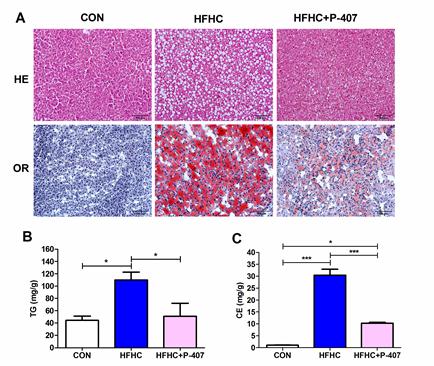Nonalcoholic fatty liver disease (NAFLD) is defined as the presence of macrovesicalar steatosis in individuals who consume little or no alcohol. The disease spectrum of NAFLD ranges from simple steatosis to nonalcoholic steatohepatitis (NASH), cirrhosis and hepatocellular carcinoma (HCC). The prevalence of NAFLD in developed countries ranges from 20-30%, while it is 12-24% in China.
NAFLD is strongly associated with obesity, dyslipidaemia and insulin resistance, and its pathogenesis remains unclear and the therapeutic options are limited. Fortunately, the generation of several different animal models (mouse, rat, rabbit, opossum, and Ossabaw pig) of NAFLD has allowed for exploring both the pathogenesis and potential treatment options of human NAFLD more easily. However, despite the success in the generation and application of various animal models of NAFLD, researchers are increasingly hitting roadblock in their efforts to understand and develop treatment options for human NAFLD because the myriad models continue to display distinct aspects of hepatic histopathology and pathophysiology.
Due to its closer evolutionary relationship to primates than more commonly used rodent models, tree shrew (Tupaia belangeri chinensis) may be an alternative choice though it has never before been used as a model of NAFLD. Researchers from Dr. Bin Liang’s laboratory (Lingqiang Zhang and others) aimed to experimentally investigate the viability of using the tree shrew as an animal model of NAFLD to explore the underlying mechanism of cholesterol by combination diet of high fat, high cholesterol, and cholate. Different groups of tree shrew were fed different diets for several weeks. Liver histopathology showed that HFHC successfully induced NAFLD from liver steatosis to inflammation and fibrosis within 10 weeks. Strikingly, the HFHC diet induced the transcriptional expression of lipoprotein lipase (lpl) in the liver but not the low density lipoprotein receptor (ldlr). Furthermore, inhibition of LPL by P-407 limited the symptoms of NAFLD induced via the HFHC diet.
This study demonstrates that tree shrew model of NAFLD induced by HFHC diet may be useful for future research of non-obese NAFLD and also highlights the importance of liver LPL in the development of NAFLD. The work was supported by
by the Strategic Priority Research Program of the Chinese Academy of Sciences (XDB13030600), National Natural Science Foundation of China (U1202223), and Yunnan Oversea High-level Talents Program (2015HA040), and was recently published in Scientific Reports (http://www.nature.com/articles/srep15970).


